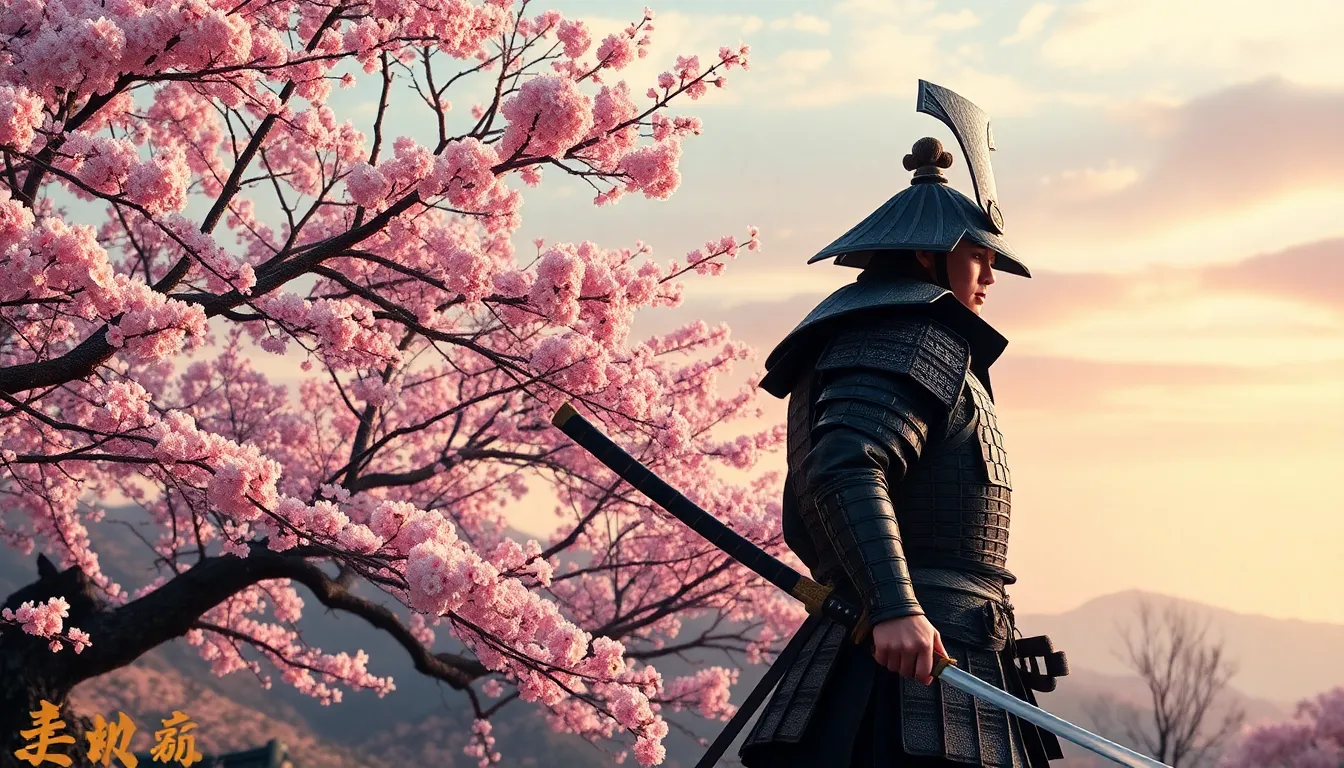In the world of video games, few titles have captured hearts quite like Ghost of Tsushima. Set against the stunning backdrop of feudal Japan, players embark on a journey filled with breathtaking landscapes, epic battles, and a story that tugs at the heartstrings. But as the tale unfolds, players are left with one burning question: how does it all end?
Table of Contents
ToggleOverview of Ghost of Tsushima
Ghost of Tsushima immerses players in a beautifully crafted open world set during the Mongol invasion of Japan in the late thirteenth century. Players assume the role of Jin Sakai, a samurai warrior grappling with the struggle to protect his homeland and uphold his family’s honor. Over the course of the game, he confronts moral dilemmas that challenge traditional samurai codes, blending stealth and combat in dynamic ways.
The game features stunning landscapes, from serene cherry blossom groves to treacherous mountains. Players navigate these environments while engaging in a rich narrative filled with historical references. Side quests enrich the main storyline, offering additional context and characterization of supporting figures like Lady Masako and Ryuzo.
Combat mechanics are intricate, emphasizing both swordplay and stealth techniques. Jin adopts new tactics to counter Mongol forces, highlighting the evolution of his character from a traditional samurai to a more adaptable warrior. This transformation serves as a pivotal theme throughout the game.
Environmental storytelling plays a vital role. Players discover artifacts and interact with locals, unveiling the broader impact of the Mongol invasion. Dynamic weather and day-night cycles enhance the immersion, reflecting the ongoing turmoil of the era.
Critical reception underscores the game’s artistry and depth. Awards for gameplay, design, and narrative recognition affirm its impact on the gaming community. Overall, Ghost of Tsushima delivers a gripping experience that captivates players while inviting them to ponder complex themes of honor, sacrifice, and identity in the face of adversity.
Summary of the Story

Ghost of Tsushima unfolds during the Mongol invasion, allowing players to explore rich narratives and dynamic landscapes. This journey follows Jin Sakai, a samurai warrior torn between tradition and necessity.
Key Characters
Jin Sakai stands at the center of the narrative, representing the struggle between honor and survival. His uncle, Lord Shimura, symbolizes traditional samurai values, while characters like Yuna provide alternative perspectives on resistance and resilience. Khotun Khan serves as the antagonistic force, embodying the Mongol threat and challenging Jin’s beliefs. Supporting characters enrich the story, each bringing unique backgrounds and motivations, contributing to Jin’s growth and internal conflicts.
Major Plot Points
The Mongol invasion ignites a series of critical events, starting with the brutal attack on Tsushima Island. Jin’s journey progresses as he witnesses devastating loss, prompting him to adopt unconventional tactics like stealth and deception. Key interactions with Yuna push him to redefine his approach to combat, while his relationship with Lord Shimura complicates his identity. The climactic battles test Jin’s resolve, leading to dilemmas that question the nature of honor and sacrifice, ultimately shaping his path as a warrior.
Analysis of the Ending
The ending of Ghost of Tsushima elegantly encapsulates the game’s central conflicts. It challenges players to contemplate the nature of honor, loyalty, and sacrifice.
Symbolism and Themes
Throughout the game, Jin’s journey symbolizes the tension between tradition and adaptation. The use of colors during key moments emphasizes emotional stakes, with the red of blood contrasting against serene landscapes. Stealth mechanics reflect Jin’s internal struggle; he shifts from samurai codes to a guerrilla warrior. The tension between honor and necessity ties back to the broader theme of survival during conflict. Cherry blossoms serve as a motif for fleeting beauty and impermanence, reminding players that choices lead to profound consequences. These elements together deepen the narrative, prompting reflection on personal values amidst chaos.
Character Arcs Conclusion
Jin Sakai’s transformation culminates as he embraces a new identity. His relationship with Lord Shimura reaches a heartbreaking resolution, showcasing the clash of ideals. Conflict arises as Jin’s choices diverge from traditional samurai ways, impacting how he views honor. Yuna’s role as a catalyst further evolves; she embodies resilience, supporting of Jin’s new path. Facing Khotun Khan solidifies Jin’s commitment to this journey, testing his resolve and affecting his alliances. Each character’s development resonates throughout the story, reflecting the harsh realities of warfare and personal growth in a time of crisis.
Player Choices Impact
Player choices significantly shape the outcomes in Ghost of Tsushima, influencing both character relationships and overarching themes.
Different Endings Explained
Ghost of Tsushima features two main endings, determined by crucial decisions made throughout the game. Choosing to confront Lord Shimura leads to a dramatic finale where Jin must decide between loyalty and personal freedom. Alternatively, embracing the path of a ghost presents a different resolution, reflecting a profound transformation in Jin’s character. Both endings resonate with the game’s central conflict between honor and survival. Emotional stakes heighten as players witness the impact of these choices, ultimately affecting character arcs and future interactions.
Consequences of Choices
Consequences of choices manifest through various character dynamics and narrative elements in Ghost of Tsushima. Depending on decisions, relationships can deepen or fracture, particularly between Jin and Lord Shimura. Embracing stealth tactics influences how NPCs perceive Jin, altering their responses and interactions. Characters like Yuna and Shimura exhibit differing reactions based on Jin’s adherence to traditional samurai codes or his shift towards guerrilla warfare. Outcomes challenge players to consider the moral ramifications of their actions, reinforcing the game’s exploration of identity within a wartime context.
Reception of the Ending
Critical reception of Ghost of Tsushima’s ending emphasizes its emotional weight and thematic depth. Players frequently highlight the impactful climax where Jin faces Lord Shimura, showcasing personal conflict. Many appreciate how the ending encapsulates the game’s exploration of honor, loyalty, and sacrifice.
Various reviews note the dual endings’ effectiveness in shaping player experiences. One path involves a direct confrontation with Lord Shimura, while the other allows Jin to embrace his ghost persona. Each choice not only alters the narrative but also influences character dynamics, enhancing engagement.
Audience reactions reveal a divide regarding Jin’s transformation. Some players resonate with his shift from traditional samurai to a more pragmatic warrior. Others express concern that this evolution challenges long-standing values associated with samurai culture.
Gaming publications praise the visual storytelling during the ending scenes. The use of cherry blossoms symbolizes the transience of life and choice consequences, striking a chord with many. Critics often mention the emotional layers the endings add, prompting players to reflect on their decisions.
Players frequently discuss the significance of moral complexities in the narrative. The intertwining relationship between Jin and Lord Shimura generates ongoing conversations about honor and duty. This tension fosters deeper engagement with the game’s themes, making it more than just a traditional samurai story.
Overall, the game’s conclusion leaves a lasting impression. It encourages players to contemplate their choices, further solidifying Ghost of Tsushima’s status as a thought-provoking title in modern gaming.
Ghost of Tsushima’s ending resonates deeply with players as it encapsulates the game’s exploration of honor and identity. Jin Sakai’s transformation from a traditional samurai to a ghost warrior raises profound questions about morality and survival. The emotional climax with Lord Shimura highlights the personal stakes involved and the sacrifices made in the name of duty.
As players reflect on their choices throughout the game, they confront the complexities of loyalty and the consequences of their actions. The use of visual motifs like cherry blossoms enhances the narrative, leaving a lasting impression. This rich conclusion not only solidifies Ghost of Tsushima’s storytelling prowess but also encourages ongoing discussions about the nature of honor in a time of conflict.




